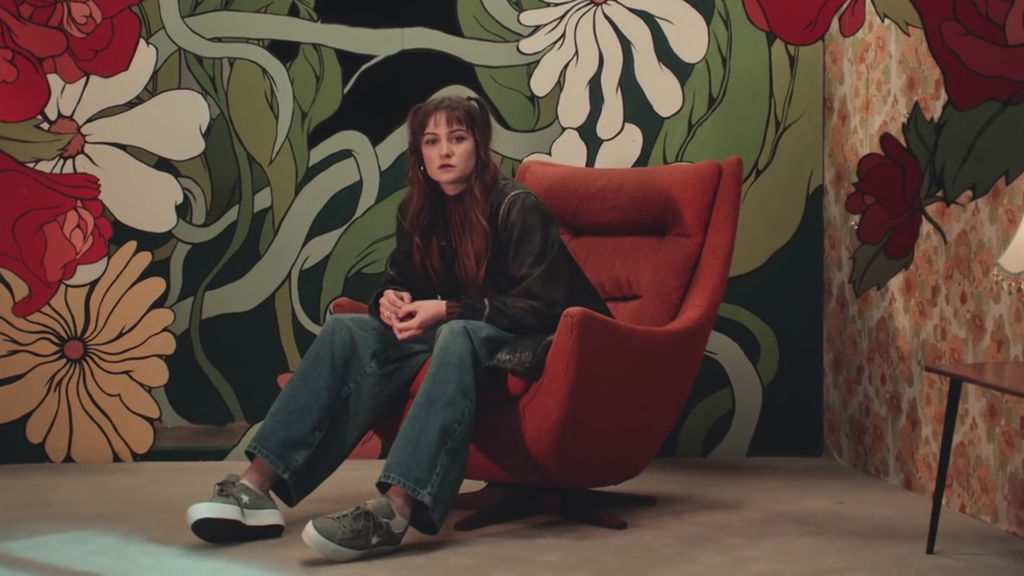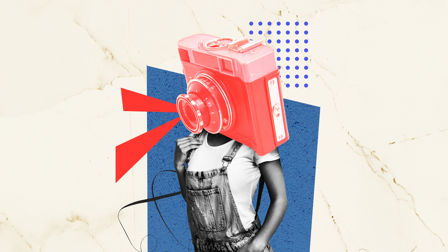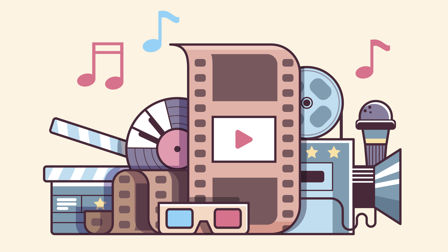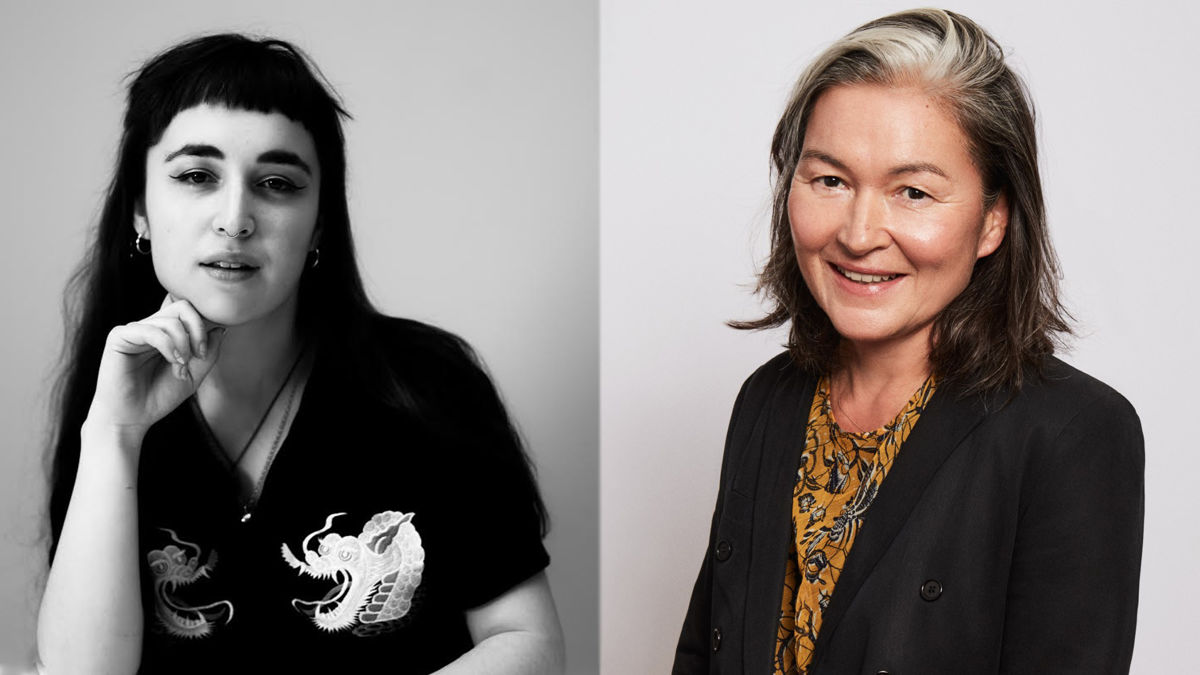Creative Correspondence: Kai-Lu Hsiung & Alice Bloomfield
For our latest Creative Correspondence, industry legend and RSA Films Global MD Kai Hsiung is in conversation with new signing and former BFI Future Film Fest Black Dog Films Award winner Alice Bloomfield about breaking into commercials, the importance of testing the water and how the industry has changed for women.
Speak to any successful production company and they'll tell you that nurturing new talent is essential for keeping creativity alive.
Spotting said talent early is essential to this, so it's unsurprising that RSA/Black Dog Films took great interest in the first recipient of 2019's BFI Future Film Festival and Black Dog Films Award: Alice Bloomfield.
For this Creative Correspondence, we asked Kai Hsiung, RSA's Global Managing Director, and Bloomfield to quiz each other on all aspects of breaking through and working in the industry.
For Hsiung, whose career has seen a progression from reception, through to Production Assistant, Producer, Executive Producer and 17 years as RSA UK's Managing Director, it's an opportunity to ask a fledgling director their views on exploring the vocation. For Bloomfield, a rare chance to grill a legend on their lasting impact.
Above: Kai Hsiung [left] and Alice Bloomfield.
Kai Hsiung: Alice, we’re so excited that you’re joining us. You were the first recipient of the Black Dog Films Award at the BFI Future Film Fest in 2019, it feels like we’ve come a long way since then.
Tell me more about that BFI film. It was your first long animation, right?
Alice Bloomfield: Thanks so much, I’m very excited to be joining too!
Yes! That film was actually my first long animation and big commission after I graduated from my illustration BA. It was a music video for the artist Puma Blue who is a friend which, along with the fact it was a short song, made for an ideal first commission. He gave me a lot of freedom with my ideas and was always around for a casual discussion about them, which turned what could have been quite an intimidating project for a first-time animator into a really enjoyable, personal collaboration.
[as is] was actually my first long animation and big commission after I graduated from my illustration BA.
I actually submitted it to a few other film festivals which it didn’t get accepted into. I remember filling out the (very long) BFI Future Film Festival application form and just feeling a bit hopeless, to the point where I nearly abandoned it. I figured you lose out on all the opportunities you don’t take though and was so over the moon for my film to get accepted into the competition, and then to win the Black Dog Films award! It’s kind of scary to think how much I would have missed out on if I gave up on that form.
You must have overseen so many young creatives and directors in your time, especially in your work with the D&DA New Blood programme. What kind of advice do you have for someone entering the industry?
Credits
View on- Director Alice Bloomfield
- Illustrator Alice Bloomfield
Explore full credits, grab hi-res stills and more on shots Vault

Credits
powered by- Director Alice Bloomfield
- Illustrator Alice Bloomfield
KH: Thank goodness you stuck it out filling in that entry form; makes one realise how these little hurdles can be so important to cross and how easy it is to be put off?
I think that nurturing and finding talent is one of the best things about this business. We need to ensure that the opportunity is there for all. I fear over the years it has become a lot harder to get into it; we need to open up the mentoring aspect to all. I remember we had a young student send in a CV for a runners job but John Payne, who ran Black Dog at the time, dug deeper and looked at his work and he was asked to join the roster. He’s still directing and that was 15 years ago.
Try and spend some time learning and watching a full crew at work. There are so many other roles that are underrepresented; everyone wants to be a director!
One bit of advice I would offer up is if you’re unsure what aspect of the industry you’re interested in, try and spend some time learning and watching a full crew at work. There are so many other roles that are underrepresented; everyone wants to be a director!? I know people think running or PA work is not what they want to do but sometimes having a good look in to the various roles can be helpful. Every great director will tell you it is all down to their entire team.
I’ve seen you’re now mixing live-action with animation. is this something you want to explore more, or would you say you are an animator/illustrator at heart?
AB: That’s such a good point, I think there can be a pressure to feel like you need to find your calling and become a success ASAP, so I can totally see how the lesser-known roles could be overlooked in that rush.
Similarly, I actually never thought I would be an animator, let alone step into live-action! I’ve always drawn, but after doing an animation internship during university and experimenting by making short GIFS I was hooked.
My first taste of live-action kind of led on from my illustration where I got to design and paint a backdrop in a music video for Biig Piig. The shot footage was then cut with my animations so that the video weaves between fantasy and reality. Hand painting a two-meter-high set was definitely a change from sitting at desk all day, and it was so cool to see my work form a tangible space, as opposed to the 2D worlds I usually create when I draw or animate.
I love the ability to execute weird, trippy, abstract sequences where the only real limitations are time and your imagination.
As a viewer I always find mixed media so visually exciting, so I’m keen to experiment and treat live action as a new medium to play with. The ways which it can interact with animation are endless and down the road I would actually love to get into 3D modelling, which is a great, natural pairing with shot footage.
I will always have a special place for animation. There’s such a high level of control where you’re able to curate every fraction of a second, which is hard give up. I also love the ability to execute weird, trippy, abstract sequences where the only real limitations are time and your imagination.
I know it's a big ask as you’ve worked on so many over the years, but do you have a favourite project you’ve worked on at RSA and why does it stand out to you?
Credits
View on-
- Production Company OB Management
- Director Alice Bloomfield
-
-
Unlock full credits and more with a shots membership
Credits
View on- Production Company OB Management
- Director Alice Bloomfield
- Illustrator Alice Bloomfield
- Producer Marija Dikic
Explore full credits, grab hi-res stills and more on shots Vault

Credits
powered by- Production Company OB Management
- Director Alice Bloomfield
- Illustrator Alice Bloomfield
- Producer Marija Dikic
KH: Well Alice, yes that is an incredibly hard question to answer as I’ve been here at RSA for over 29 years now!
I’ve been so fortunate to work on a smorgasbord of projects with an amazing collection of talented directors and crew. A few standout pieces for you though; from the Orange ad Ridley shot in NZ, to the Phillips project where I first realised the full potential of having such a wide variety of directors all under the same roof, to Life In A Day 2020, where we witnessed and collated a film from over 600,000 entries.
And, recently, a documentary called Big Boys Don’t Cry about Joe Marler for Mental Health Awareness week. One thing this business brings us is the opportunity to work across a wide spectrum of subjects.
If you were not doing animation, what sort of thing do you think you would be doing?
Credits
View on-
- Production Company RSA Films
- Director Gray Hughes
-
-
Unlock full credits and more with a shots membership
Credits
View on- Production Company RSA Films
- Director Gray Hughes
- Producer Lisa Joseph
- Global Managing Director Kai-Lu Hsiung
- Executive Producer Caspar Delaney
- Executive Producer Damiano Vukotic
- Post Production Absolute Post
- Music Eclectic
Explore full credits, grab hi-res stills and more on shots Vault

Credits
powered by- Production Company RSA Films
- Director Gray Hughes
- Producer Lisa Joseph
- Global Managing Director Kai-Lu Hsiung
- Executive Producer Caspar Delaney
- Executive Producer Damiano Vukotic
- Post Production Absolute Post
- Music Eclectic
AB: Amazing, I loved Life in a Day 2020. It offers such perspective, especially in 2020 when everyone’s worlds became so much smaller after being restricted by lockdown.
You’re so right that it's a great opportunity to be able to work across so many subjects. I used to assume that my career would be 100% illustration, but I think it's so much healthier to be able to mix it up. Sometimes, when working in one area, it gets hard to see the wood for the trees. I often have a few projects on the go and being able to switch from one medium to the next not only keeps things exciting, but also really allows me to come back to projects with fresh eyes and make improvements that I maybe wouldn’t be able to otherwise.
My work is very process-driven so as long as I can experiment with new materials and techniques, I’m happy.
I do have a few different things I would love to try. My work is very process-driven so as long as I can experiment with new materials and techniques, I’m happy. I’ve always wanted to create a huge mural, something like the Gucci ones which cover whole building sides. Tattooing and, as I’ve mentioned, experimenting with 3D modelling are definitely on the list as well. However, to me, all these things seep back into animation, animation with frames made from tattoos and murals would be amazing, and 3D modelling has the obvious link as well. I think I’d end up having to fill the animations gaps with a lot of illustration and live-action filmmaking instead!
Over the last year a huge number of jobs have had to adapt to Coronavirus and the lockdown. As someone who works with so many directors and individuals, what kind of challenges have you faced, and do you feel like there’s been a change to the kind of content RSA has been able to produce?
Credits
View on- Agency In-House
-
- Director Kevin Macdonald
-
-
Unlock full credits and more with a shots membership
Credits
View on- Agency In-House
- Director Kevin Macdonald
- Editing PS 260
- Editor Matt Posey
- Executive Post Producer Zarina Mak
- VFX Producer Natalie Raffaele
- Colorist Tim Masick
- Audio Mixer Michael Marinelli
- Music Found Object/New York
- Executive Creative Director Jay Wadley
- Executive Creative Director Trevor Gureckis
- Creative Director Ben Marshall / (Composer/Creative Director)
- Creative Director Adam Weiss / (Composer)
- Executive Music Producer/Music Supervisor Jennie Armon
- Head of Production/Music Supervisor Matt (Bones) Nelson / (Music Supervisor/Head of Production)
- Producer Nick Chomowicz
- Music Coordinator Agatha Lee
- Producer Ridley Scott
- Creative Director Lorrin O'Neill
- Creative Director Drew Jaz
- Associate Creative Director Christina Whalen
- Associate Creative Director Andrew Shaffer
- Senior Producer Maria Real
Explore full credits, grab hi-res stills and more on shots Vault

Credits
powered by- Agency In-House
- Director Kevin Macdonald
- Editing PS 260
- Editor Matt Posey
- Executive Post Producer Zarina Mak
- VFX Producer Natalie Raffaele
- Colorist Tim Masick
- Audio Mixer Michael Marinelli
- Music Found Object/New York
- Executive Creative Director Jay Wadley
- Executive Creative Director Trevor Gureckis
- Creative Director Ben Marshall / (Composer/Creative Director)
- Creative Director Adam Weiss / (Composer)
- Executive Music Producer/Music Supervisor Jennie Armon
- Head of Production/Music Supervisor Matt (Bones) Nelson / (Music Supervisor/Head of Production)
- Producer Nick Chomowicz
- Music Coordinator Agatha Lee
- Producer Ridley Scott
- Creative Director Lorrin O'Neill
- Creative Director Drew Jaz
- Associate Creative Director Christina Whalen
- Associate Creative Director Andrew Shaffer
- Senior Producer Maria Real
KH: It will be fascinating for the world to reflect on how 2020 changed so many aspects of people’s lives.
I think for RSA/BD we have managed to try and keep things moving forward under the circumstances.
The revolution that is remote shooting will surely have a great impact on the business. I know there are certain scenarios where this is just not workable solution but for some projects, it really has been a game-changer; to greatly reduce the amount of travel that folks have had to do. I know clients are embracing this fact, as it is not only a greener solution, but a cost-saving one too.
Remote shooting will surely have a great impact on the business
I think that we have had to become even more global in our talent search. A client wants to shoot in a remote location, but we cannot travel there, so it has ensured that we scour the world for local talent which has been a brilliant way to shine a light on directors that we might not have found otherwise.
How have you coped with the impact of Covid restrictions for your work process?
AB: I’ve actually been really lucky during lockdown. My normal work set-up is just me at home with my iMac and drawing tablet - so not much changed there. When all the live action shoots had to be cancelled and there was a greater demand for animators and creatives who could work from home, I was lucky enough to be able to work on some really fun jobs that wouldn’t have even existed outside the lockdown.
One example was a live-action music video I had been commissioned to do a few animated clips for. When Covid hit this was unfeasible, so my little animated clip commission turned into me having to animate the whole video. But yeah, very thankful to have been able to work all of last year as a freelancer! Not sure what I would have done otherwise.
My normal work set-up is just me at home with my iMac and drawing tablet - so not much changed there.
I’ve enjoyed seeing an increase in animation being used in music videos, adverts, and online content. There’s also been so many innovative and creative ways animation has been used to replace specific events that had to be shut down during Covid; my favourite being the GCDS Out of this World digital fashion show.
It replaced the standard runway with a completely animated, CGI version, where aliens strutted the catwalk and a digital Dua Lipa and Carebear sat in the audience. Very inspiring stuff! Hopefully this isn’t a trend and animation can continue to be utilised at this level.
The film industry is quite male-dominated; what has your experience been throughout your career as a woman? Have there been any challenges, especially when you first started 29 years ago?
KH: It certainly has changed in the many years I’ve been in the business. Everyone thinks about the technical advances with digital vs film formats, which helped to make the film industry so much more accessible to all; but for production, the mobile phone/internet revolution was the single most important change. To not have to sit in the office, waiting by a fax machine whilst you typed out a call sheet that had to be sent to 80+ people, or sit in a phone box on location with a bag of 10p pieces has meant that flexible working is actually possible.
The other big change is how many more women are part of the creative process, whether it be creative teams at agencies or directors. Production has always been a good balance of male/female but there were so many more scenarios where I was the only woman in the room. Having said that, there were some powerhouse strong female role models in production Mary Francis, Lizzie Gower, and in particular, Jo Godman, and agency HTVs Maggie Blundell, Diane Croll, Tracy Stokes, and Francine Linsey to name but a few.
Production has always been a good balance of male/female but there were so many more scenarios where I was the only woman in the room.
It’s brilliant to see my peers scaling the heights to CCO level, like Kate Stanners, Chaka Sobhani, and Vicki McGuire. They have been instrumental in ensuring there is a better balance in the creative departments.
Crews are generally still very male-dominated, and I’d love to see this become a bit more balanced. The one area that has been dominated by women is the editing department. So many amazing films were edited by women. Unsung heroes.
Maybe they could manage the life-work balance better from an edit suite.
)














